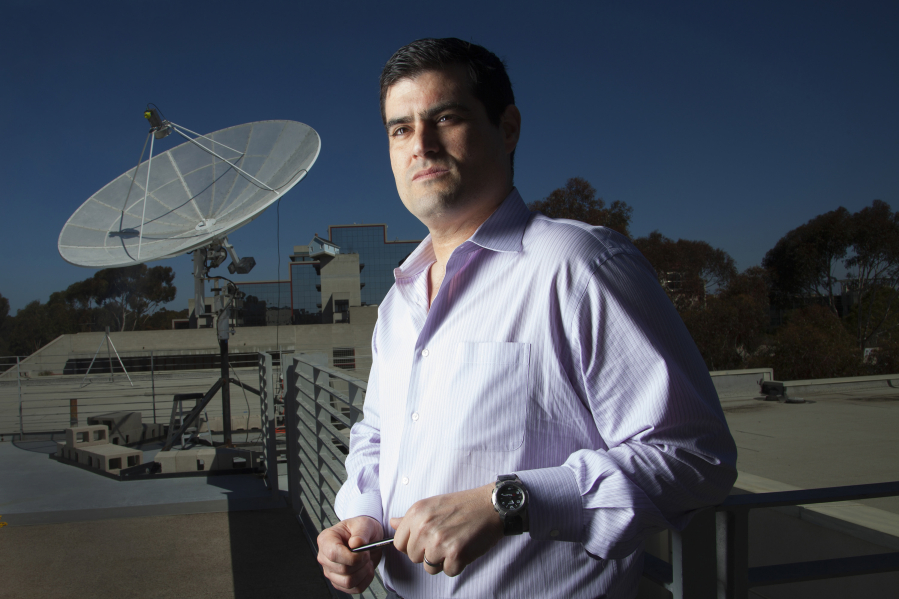SAN DIEGO — The University of California San Diego has received $40 million in gifts to create and lead an observatory in Chile that’s expected to greatly improve scientists’ ability to study how the universe evolved after its birth 13.8 billion years ago.
The university and its collaborators will link and strengthen two major telescope projects in Chile’s Atacama Desert that have been pressing to see and understand remnants of the Big Bang. In the next five years, the consortium also will develop telescopes that will be placed at Atacama, a plateau whose clear, dry skies make it among the best locations on Earth to “look back in time.”
The collective array of equipment will be known as the Simons Observatory in honor of James Simons, the New York billionaire-mathematician who donated $38.4 million for the project. An additional $1.7 million was donated by the Heising-Simons Foundation.
Simons earlier gave UC San Diego $4.3 million to develop telescopes that will be part of the new observatory.
The observatory will be led by UC San Diego astrophysicist Brian Keating.
“We want to capture the earliest ‘baby picture’ of the universe,” he said, “which means we need to look for ancient photons from the Big Bang.”
UC San Diego and the University of California Berkeley run three telescopes at Atacama near a large telescope that’s jointly operated by Princeton and the University of Pennsylvania. Simons proposed that the four institutions collaborate on an observatory to build on each other’s strengths.
The two teams “have somewhat different instruments that give a complementary vision of the universe,” Simons said. “These are outstanding people who will work wonders together,” he said of the researchers.
Much of the study will focus on the origins of the universe. Scientists theorize that the universe came into existence 13.8 billion years ago when a tiny ball of hot, dense matter exploded, an event known as the Big Bang. They also theorize that the universe underwent a huge expansion within a fraction of a second of the explosion. This is known as cosmic inflation.
Scientists decided that they could prove that inflation occurred if they could find a type of twisted light leftover from the Big Bang. They’ve been searching for this faint echo with such instruments as BICEP2, a telescope that Keating helped to design and build at the South Pole. The search has led to wild and humbling moments in physics.
In 2014, the Harvard-Smithsonian Center for Astrophysics announced that a team of scientists had found the light they sought with the use of BICEP2, a discovery some said was worthy of the Nobel Prize.
“If our discovery can be confirmed, we will have detected inflation’s imprimatur: the fingerprint of the Big Bang,” Keating, who was part of the science team, said.
He repeatedly emphasized the need to confirm the discovery. Many others did not. Less than a year later, scientists partially recanted the finding, saying that they had not discovered definitive proof that the universe “inflated” after the Big Bang.
“The mistake is one of interpretation, ” Keating said. “The telescope did capture a clear signal. It might be dust from the Milky Way or from gravitational waves lurking beneath the dust signal, but we have determined that the signal isn’t totally from when we believe the universe began to expand .
“This is not a blunder. It’s not like we left the lens cap on the telescope.”
The funk didn’t last long. Earlier this year, cosmologists were cheered by news of a remarkable feat: Scientists had recorded the sound of two black holes colliding in deep space. The collision produced ripples called gravitational waves. The waves were detected by observatories in Louisiana and Washington, and proved Albert Einstein’s century-old claim that such waves exist.
Simons said he is enthralled by this sort of “big science,” largely because much of his life has been devoted to high-level research.
He earned a bachelor’s degree in mathematics at the Massachusetts Institute of Technology in 1958, then shifted to UC Berkeley, where he earned a doctorate in the same subject when he was 23. Simons went on to teach at MIT and Harvard, and he served as a code breaker for the National Security Agency. In 1976, he was awarded the Oswald Veblen Prize for his contributions to geometry and topology.
Simons left academia to make money, which he did with great success. He founded Renaissance Technologies, a hedge fund that helped to pioneer the use of quantitative trading in money management.
Mark Thiemens, dean of physical sciences at UC San Diego, is eager and excited about the new project.
“The deepest view into the birth of the universe is going to come from this fantastic new telescope array,” he said. “We will learn more of our origins than we dreamed possible not so long ago. Many of the unanswered questions about the universe can be tackled, as well.”



